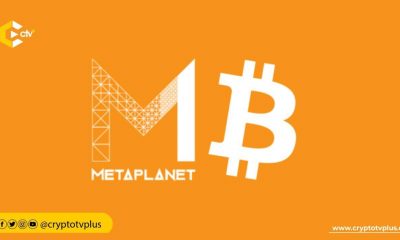Education
Understanding Mining Difficulty in Blockchain: A Comprehensive Guide

Blockchain technology has revolutionized various industries by providing decentralized and transparent systems. Mining is a critical aspect of this technology that plays a vital role in maintaining the security and integrity of blockchain networks. Mining difficulty is a crucial component of mining that determines the level of effort required to solve the mathematical problems involved in validating transactions on the blockchain network. In this article, we will delve into the intricacies of mining difficulty, including how it is determined and its significance within the blockchain ecosystem. Anyone interested in the workings of blockchain technology must comprehend mining difficulty to gain a robust understanding of the system.
Definition & Purpose of Mining Difficulty
Mining difficulty is the degree of intricacy involved in solving the mathematical puzzles that miners must solve to append new blocks to a blockchain. This is a dynamic factor that adapts over time, guaranteeing a consistent pace of block generation. The main function of mining difficulty is to control the pace of block creation and ensure the security and stability of the blockchain network. By regulating the level of difficulty, miners are encouraged to continue participating in the network, ensuring its sustainability and overall success. The mining difficulty is an essential parameter that plays a significant role in maintaining the integrity of the blockchain ecosystem.
Determining Mining Difficulty
Adjusting the mining difficulty level is a critical aspect of blockchain maintenance. The process and requirements differ depending on the consensus algorithm, such as Proof of Work (PoW) or Proof of Stake (PoS). For the sake of clarity, this article will focus on the PoW consensus algorithm.
Proof of Work Consensus
In Proof-of-Work (PoW) based blockchains, mining difficulty is adjusted every fortnight (2,016 blocks) based on the total computational power, or hash rate, of the network. The aim of this adjustment is to uphold a consistent block time. Although the formulas may differ, the objective remains similar across various blockchain implementations. For instance, Bitcoin depends on this mechanism to guarantee that the network remains secure and unswerving over time. All in all, this difficulty adjustment mechanism is an indispensable part of the underlying technology that propels these decentralized systems.
Difficulty Adjustment Formula
The mining difficulty is a crucial parameter in blockchain protocols. It’s updated based on the time it took to mine the previous blocks. When the hash rate increases, the blockchain protocol increases the difficulty value. Conversely, when the hash rate decreases, the difficulty value decreases. This mechanism ensures that the blockchain network maintains a stable rate of block production and that the network remains secure against attacks.
Significance of Mining Difficulty
Network Security
The security of a blockchain network relies heavily on mining difficulty. The more difficult the computational problems to solve, the more protected the blockchain history is from attackers. In turn, this preserves the immutability and integrity of the blockchain.
Block Time Consistency
The stability and predictability of blockchain networks are greatly enhanced by mining difficulty. The protocol maintains this stability by adjusting the block time based on the average block generation time, ensuring that blocks are added to the blockchain at a consistent rate. For example, Bitcoin maintains a 10-minute block interval.
Economic Incentives
The mining difficulty mechanism significantly impacts the economic incentives for miners. With an increase in difficulty level, miners require more computational resources, including energy and hardware, to overcome the increasingly complex puzzles. This fosters competition and investment in mining operations, thereby making it extremely difficult for malicious actors to overpower the network.
Examples:
Bitcoin (BTC):
Bitcoin, the pioneering cryptocurrency, adjusts its mining difficulty every 2,016 blocks. The Bitcoin protocol aims to maintain a block generation time of approximately 10 minutes. If blocks are mined faster, indicating increased mining power, the difficulty increases. Conversely, if blocks are mined slower, the difficulty decreases.
Ethereum (ETH):
Ethereum, the second largest blockchain platform by market capitalization, which is now operating a Proof of Stake (PoS) consensus, after transitioning from PoW had had its mining difficulty adjusted to maintain a consistent block time. The Ethereum network aimed for an average block time of around 13-15 seconds.
Litecoin (LTC):
Litecoin boasts a swifter transaction confirmation rate than Bitcoin thanks to its shorter block generation time. Each new Litecoin block is processed in just under three minutes (2m30s), setting their approximate BlockTime at around two-and-a-half-minutes or so (~150 Seconds).
Conclusion
Mining difficulty is a critical concept in blockchain technology that is fundamental to maintaining the security, stability, and predictable block generation rate of a network. It is achieved by dynamically adjusting the difficulty level, which ensures that blockchain protocols maintain the network’s integrity, discourage attacks, and promote a fair and competitive mining environment. Understanding mining difficulty is essential for grasping the inner workings of blockchain systems and their impact on various industries. As such, it is crucial for developers, investors, and enthusiasts alike to be well-versed in the intricacies of mining difficulty to make informed decisions and stay ahead in this rapidly evolving field.
Read also: What is 51% attack and how to prevent it?

























1 Comment